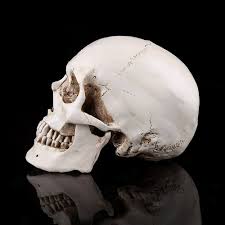Understanding the Human Skull: Anatomy and Importance

Introduction
The human skull is a vital structure in the anatomy of the human body, serving not only as a protective casing for the brain but also as a base for the facial framework. Its significance extends far beyond mere biology, playing a crucial role in anthropology, archaeology, and forensic science. Understanding the human skull is essential for insights into human evolution, identity, and even criminal investigations.
Anatomical Structure and Functions
The skull comprises two main parts: the cranium and the facial bones. The cranium encases the brain, housing important areas such as the sensory organs and crucial blood vessels. Contrarily, facial bones form the structure that supports our facial features, including the eyes, nose, and mouth. Comprising 22 bones in total, the skull facilitates various essential functions, such as protecting the brain from injury, supporting respiratory function, and assisting in the chewing of food.
Relevance in Anthropology and Forensics
From an anthropological perspective, the human skull is a treasure trove of information. It can reveal details about an individual’s sex, age, and ethnic background — knowledge that is paramount in studies of human evolution and migration. Forensic scientists likewise rely heavily on skull morphology to assist in identification during criminal investigations. Recent advances in 3D imaging and skull morphology can provide crucial insights to solve cases where remains are found.
Current Discoveries and Studies
Recently, researchers have made remarkable discoveries focused on the human skull that contribute to our understanding of ancient human relatives. Notably, a study published in “Nature” detailed the analysis of a well-preserved Neanderthal skull, shedding light on the evolution of cranial traits and brain size. Such findings are pivotal in reconstructing the timeline of human evolution and understanding the anatomical differences that separate us from our ancestors.
Conclusion
The human skull is not merely a structural component; it is a key to unlocking the mysteries of human biology and history. As research technologies continue to evolve, the skull’s relevance in scientific inquiry and forensic analysis is expected to grow. This underscores the importance of interdisciplinary studies that encompass anthropology, archaeology, medicine, and forensics, highlighting how interconnected our understanding of the human condition truly is.









